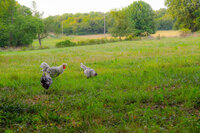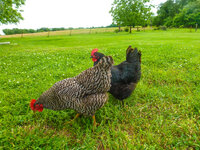Clkendrick13
In the Brooder
We have 69 acres in Texas so most of the year is nice weather. I am hoping to truly free range my birds only putting them in a coop at night to protect them from predators. Does anyone fully free range, no fencing at all? Will they lay in the coop when they are put up for the night or am I going to end up searching 69 acres for eggs? We have a bunch of different kinds of breeds. About how much food would I feed per bird? Also on free range would they still need the grits and oyster shells? Any advice on how to successfully free range would be great.





